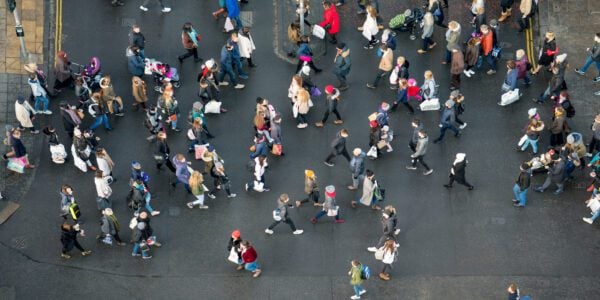
06/03/15
4 min read
The spending power of local authorities in England has been cut substantially during this parliament.
The Institute for Fiscal Studies (IFS) found that local authorities’ spending per person has been cut by 23.4% in real-terms between 2009–10 and 2014–15, using a comparable definition of net spending on services over time by single-tier and county councils.
However, the size of cuts varied markedly across the country – Westminster saw a cut of 46.3%, while North East Lincolnshire experienced a cut of 6.2%. On the whole, more deprived areas and those that saw faster population growth have seen larger cuts.
Further cuts planned for 2015–16 will generally be focused on the same local authorities that have lost over the last five years. For example, London boroughs face cuts of 6.3% on average next year compared with 1.9% cuts faced by shire counties. Without a change in policy, any further cuts over the next parliament are also likely to affect the same places again.
These are some of the main findings of an Election Briefing Note published today by the IFS with funding from the Nuffield Foundation.
The report looks at how local authorities’ spending and different sources of revenue have changed across England and how these cuts to funding have translated into changes in spending on different service areas, such as social care, transport, housing, and environmental services.
Cuts to local authority spending have been large. They were driven by large cuts to local authority revenues, particularly grants from central government. In particular, the IFS found that:
- Spending by local authorities in England has been cut between 2009–10 and 2014–15 by 20.4% after accounting for economy-wide inflation. Taking into account population growth, spending per person has been cut by 23.4%.
- These cuts are similar in magnitude to those seen on average across central government departments outside protected areas such as the NHS, schools and overseas aid.
- Grants from central government (excluding those specifically for education, public health, police and fire services) have been cut by 36.3% overall (and by 38.7% per person) in real-terms. Total council tax revenues have grown slightly in real-terms over this period (3.2%) but this still represents a decline of 0.7% per person.
- Taking grants and council tax revenues together, local authorities’ total revenues have fallen by 19.9% overall (or 22.9% per person) in real-terms. But the overall cut to spending was actually slightly larger than this because, on average, local authorities have added to their reserves over this period.
The cuts to local authority spending have also varied in size across different areas of England, with the cuts largest in areas more reliant on grants and with higher initial levels of spending.
- Cuts to net service spending have tended to be larger in those areas that were initially more reliant on central government grants to fund spending (as opposed to locally-raised revenues). These are areas that have, historically, been deemed to have a high level of spending need relative to their local revenue-raising capacity. The cuts to spending per person were also higher on average in areas that saw faster population growth.
- London boroughs, the North East and the North West have seen the largest average cuts to spending per person. London boroughs cut spending per person on average by 31.4%, while spending per person was cut by 26.5% in the North East and 25.7% in the North West.
- Since these regions initially had the highest level of spending per person, there has been some convergence in the average level of local authority spending per person across regions over the last five years. In 2009–10, spending per person in London was on average 80.1% higher than that in the South East; by 2014–15 – with London having seen spending cuts that were nearly twice as deep as those seen in the South East – this differential had fallen to 48.0%.
Local authorities have not cut all service areas equally. Despite it being the largest component, social care (including adult social care and children’s and families’ services) has seen one of the smallest cuts to date.
- Despite this relative protection, net spending per capita on social care was cut by 16.7% in real-terms between 2009–10 and 2014–15.
- Some of the service areas that saw the largest cuts to net spending were planning and development (which was cut to less than half its original level), regulation and safety, housing, and transport (all of which were cut by at least 30%). There was variation across the country, however, in which services different local authorities chose to focus the cuts on.
There are likely to be further cuts to local government spending power beyond the election and there are a number of reasons to believe that these may be concentrated on many of the same authorities that have already seen the largest cuts. In particular, those areas with the lowest local revenue-raising power will continue to be the most exposed to cuts in central government funding, while those with higher population growth will find it harder to maintain levels of spending per person.
David Innes, a Research Economist at IFS and one of the authors of the report, commented:
“English councils – like many government departments in Whitehall – have experienced sharp cuts to their spending power over the last five years. But the size of the cuts has varied a lot across England. On the whole, it is more deprived areas, those with lower local revenue-raising capacity, and those that have seen the fastest population growth that have seen the largest cuts to spending per person. Further cuts are likely to come in the next parliament and they could well be focused on many of the same local authorities if the current mechanism for allocating funds is retained.”
All IFS Election Briefing Notes are available to download from the website >>




















































